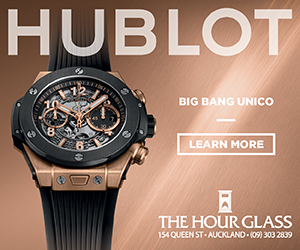Rewind the Clock: The Evolution of Rolex
Remix Editor-in-chief Amber looks back at the historical evolution of one of the world’s most renowned watchmaking brands, Rolex.

Image via @rolex
I dare you to think of a watch brand and not have Rolex at the tip of your tongue. Since 1905, the watchmaking world has witnessed their technical evolution in awe. At a time when standard timepieces were mere pocket watches –which by their very nature always remain in the same position – Rolex creator Hans Wilsdorf decided to develop a wristwatch capable of keeping up with the movements of people and their busy daily lives. Rolex has always been committed to demonstrating the superlative ‘performance under pressure’ of its watchmaking creations. Their superior wristwatches have succeeded through extreme tests under real-life conditions; pioneering explorers, adventurers and elite athletes who are constantly pushing back the boundaries of their discipline. Even US Navy SEALs wear Rolex to measure time when they dive so they can measure distance in the dark. This use of the world as a ‘living laboratory’, in accordance with the wishes of Hans Wilsdorf, is one of the brand’s founding principles.

Image via @rolex
The Big Three
There were three major moments in time Rolex overcame industry challenges to turn wristwatches into instruments of daily use that rocketed them to the watchmaking hall of fame.
Precision
Founder Hans Wilsdorf said, “I was convinced that my life’s success revolved around precision.” And he wasn’t wrong. Chronometric precision holds a central place in the history of Rolex. In 1914, they needed to nail this and achieve a Class ‘A’ precision certificate from the highest authority for chronometric precision at the time (called
Kew Observatory). After 45 days of rigorous testing that was usually reserved for large marine chronometers, Rolex became the first wristwatch to be awarded this – something that completely shook the watchmaking world.
Waterproofness
Creating a high-quality waterproof and dustproof watch is a lot harder than you think, particularly in 1926. But this is when Rolex unveiled the first waterproof wristwatch, the Oyster Case; achieving another world-first with its hermetically sealed case that provided optimal protection with a unique screw-down bezel, case back and winding
crown. “You just keep your Oyster on your wrist whatever happens and it will never fail you. Is this not wonderful?” — Hans Wilsdorf.
Self Winding
If you’d have asked someone in the early 1900s if a wristwatch could wind itself they’d have laughed, but Rolex had a habit of setting standards for the world with their unique innovations. In 1931 they revealed yet another world-first with their self-winding mechanism using a free rotor called ‘Perpetual’, which would later become the standard adopted by the entire watch industry. With this intricate system, the movement winds itself while the watch is being worn, as every movement of the wrist turns the rotor which drives a mechanism that winds the mainspring. Mind-blowing stuff for the mere mortals of 1930, and admittedly, myself. Fun fact: Today, the autonomy of Rolex movements when the watch is off the wrist can reach 72 hours

Image via @rolex
GOING UP
In 1953, Sir Edmund Hillary wore a Rolex on the British expedition to reach the summit of Mount Everest, at an altitude of 8,848 metres.
GOING DOWN
In 2012, James Cameron on his Deepsea Challenge Expedition, descended to a depth of 10,908 metres in the Mariana Trench. An experimental Rolex Deepsea Challenge watch was attached to the submersible. It resisted phenomenal pressure, equivalent to a weight of approximately 12 tonnes on the crystal of the watch, returning intact.
GOING FAST
In 1935, with his faithful Oyster on his wrist, Sir Malcolm Campbell became the first man to break the legendary speed barrier of 300 mph (approximately 482 km/h) at the wheel of his Bluebird.
It all makes sense now. Not only are Rolex at the top of the watchmaking game… they created the sport. The brand’s century-old success goes beyond just its technical breakthroughs. Rolex has maintained the founding vision of Wilsdorf, who saw the wristwatch as an object of the future, emblematic of the modern era. Of which it continues to evolve now with 14 unique models; from the Oyster Perpetual Datejust of 1945 to the Sky Dweller of 2012, no matter which style you choose, a Rolex lasts a lifetime. It’s understandable they’re considered an investment piece – if you wear it everyday, the cost per wear more than warrants ownership. Not only will you get your lifetime of wear from it, your children more than likely will, too. I had a friend wait over a year for her pre-ordered Rolex. Even though it was a long wait, the service and the experience when the watch arrived was “unmatched”.





